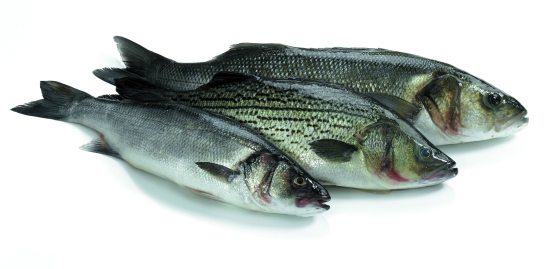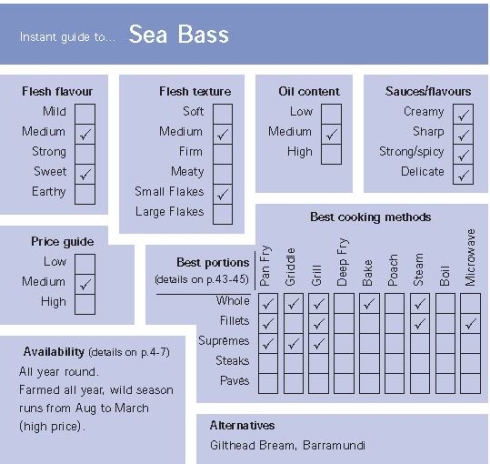In the wild they are found from the Mediterranean to Norway
in spring and summer, grow up to 7kg, and are a prize catch,
especially when line-caught. Now, thanks to farming in the Mediterranean,
this highly rated fish is not only considerably more affordable,
but available in plentiful supply all year round. The only difference
is that farmed Bass have a slightly higher fat content.
Fish from 300g-600g are ideal for simply gutting, scaling,
stuffing with herbs and baking or grilling. Skin- on fillets
(two per person from a 400-600g fish, or one from a 800g+ fish)
are great for grilling or pan-frying. Large wild fish over 3kg
also yield good suprêmes. Sea Bass has a delightful flavour
which stands on its own, but also works with stronger flavours,
and is particularly popular in Thai cuisine.
There is also a variation of the European Sea Bass called Striped
American Bass (Morone saxatilis), which is a farmed
freshwater fish, but without the typical earthy freshwater taste.
Hybrids of Striped Bass and White Bass (Morone chrysops)
are increasingly common as farmed species and are often known
as Palmetto Bass. The broken stripes behind the pectoral fin
are a clear indication of the hybrid nature of the centre bass.

1.
Sea Bass (farmed). 2. Hybrid American Bass. 3. Sea Bass (Wild)

thanks
to Ken Loughran for information on hybrid American Bass.